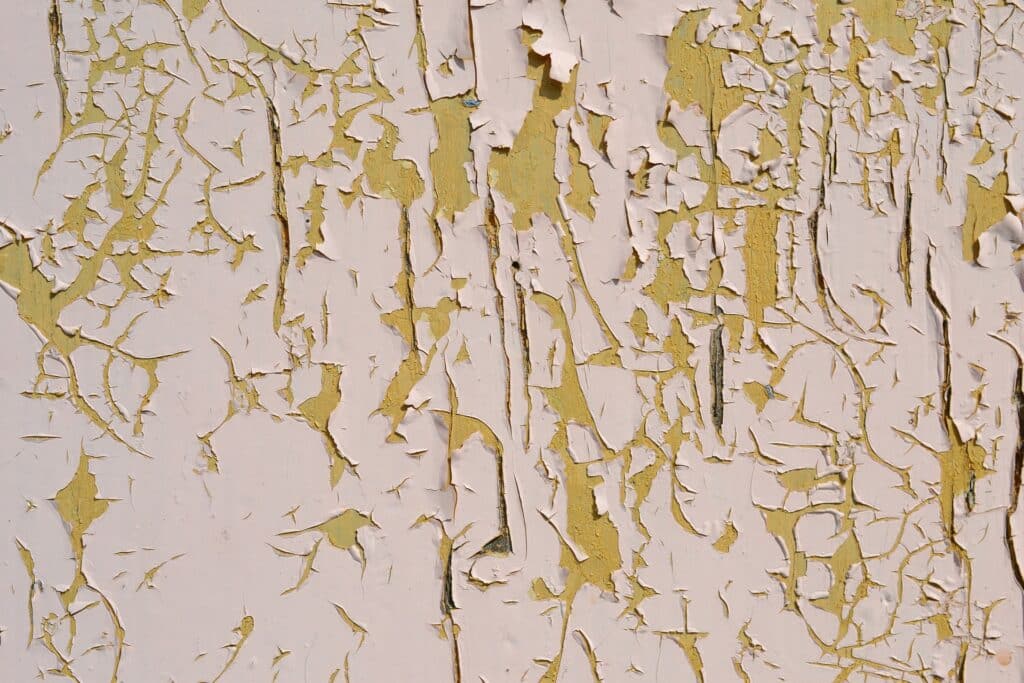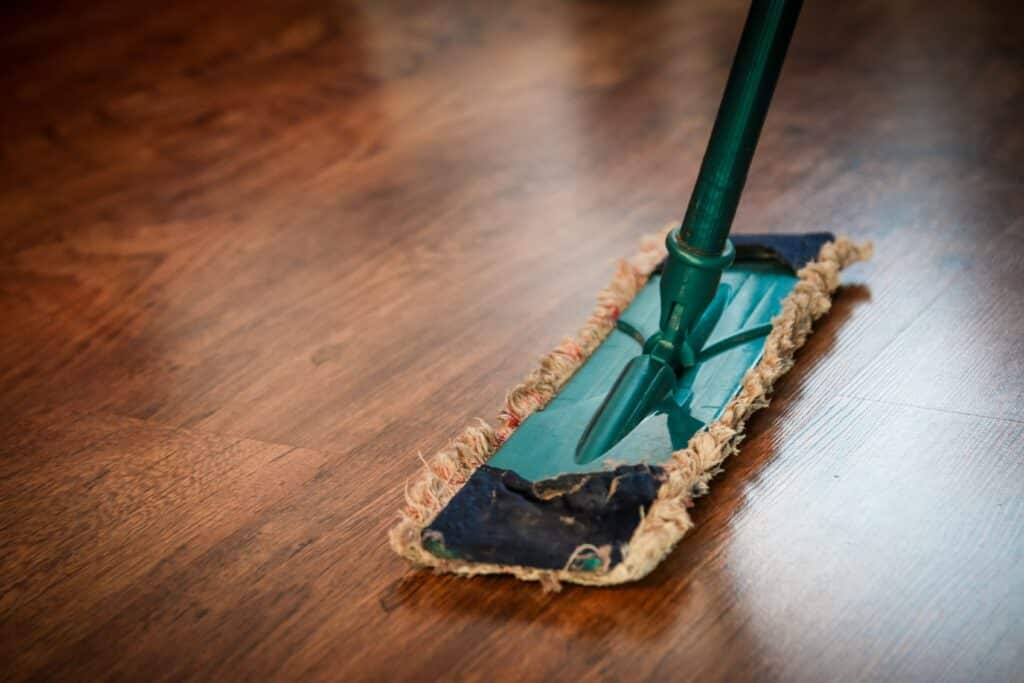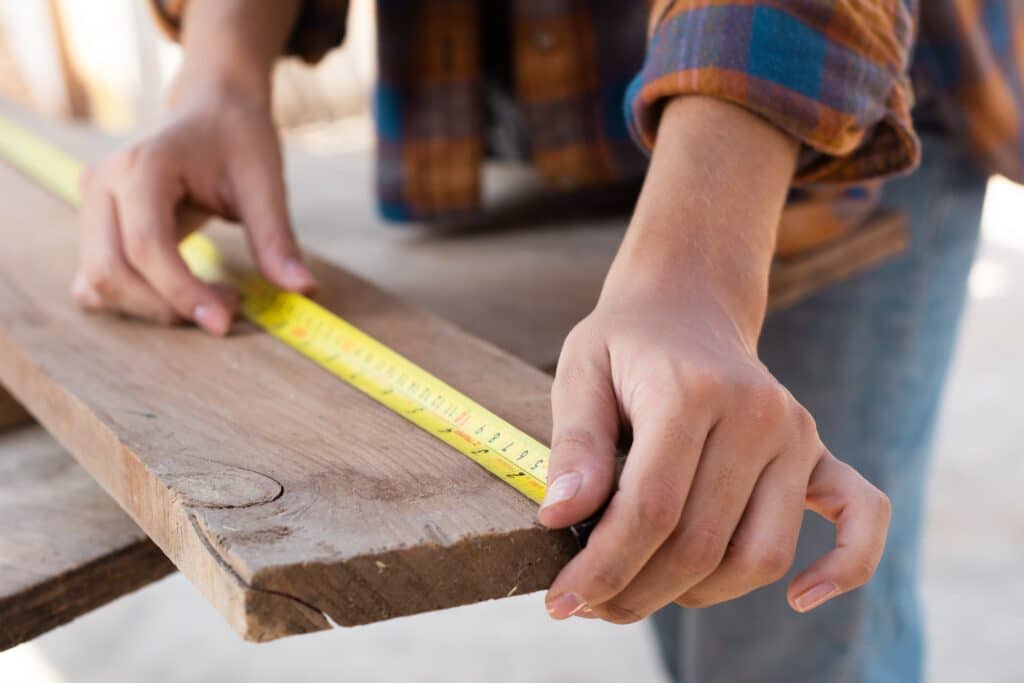Removing paint from wood can be a daunting task, even for a seasoned DIYer. Luckily you’ve come to the right place! In this step-by-step guide, we will walk you through three different methods on how to remove paint from wood: sanding, a hot air gun or chemical paint strippers.

Inspect the Wood
The first question you should ask yourself is whether or not the wood you want to strip is worth your time and effort. Check for cracks, rot or any form of damage that may render it unfit for its intended use. If it’s not, don’t bother stripping the wood only to realize you need to replace it anyway.
Check for Lead Paint
It is important to check if the paint you want to remove isn’t lead-based. Especially older buildings have a high risk of lead paint. Lead paint can be very harmful for your health and should be treated with caution. For more information you can visit the Environmental Protection Agency’s website.

Which Method is Best for Removing Paint From Wood?
It depends.
Sanding is a good method when your wood is smooth, but less so if the wood is carved or if there are a lot of recessed areas.
Using a hot air gun is a very fast method for removing any paint, but when there is varnish underneath, it will become gooey. This glue-like varnish will come off with a plastic scraper though.
When there are a lot of paint layers or varnish layers, a chemical paint stripper is the way to go. It deals with both types of layers very effectively. When you want to remove paint from carved wood this method excels as well. The paint stripper can reach all areas so this makes it ideal for wood with a lot of recessed areas.
Keep it Safe
Whether you are using the sanding method, a chemical paint stripper or a hot air gun, it’s always advisable to use the necessary safety precautions.
Sanding can create a lot of dust which can be harmful so you want to have a good mask and eye protection.
Paint strippers can cause a lot of chemical fumes so a mask fit for chemical use, eye protection and gloves are a must. Whenever possible, work outside or make sure your working place is well ventilated.
A hot air gun can also create chemical fumes when heating paint or varnish. Again, use a mask suited for chemical use, eye protection and gloves. Don’t forget that you are working with wood and a hot air gun can be really, well, hot. Having a fire extinguisher nearby just in case could save you a lot of trouble.
Keep in mind your clothes will most likely be very dusty or have some chemical residues on them when you finish. Using some old clothes while you work that you can leave at your working spot or outside can come in handy and will prevent your house or car getting all dirty.
How to Remove Paint From Wood
Method 1: Sanding
Product and Tools You’ll Need
- Drop cloth or plastic sheeting
- Sandpaper (coarse, medium, and fine grit)
- Orbital sander (for larger surfaces)
- Steel wool or wire brush
- Gloves and safety goggles
- Dust mask
Step 1: Prepare the Surface
- Start by covering the surrounding area with plastic sheeting or drop cloth to protect it from any flying dust or debris. It will also facilitate any cleaning afterwards.
- Remove all nails, screws,…
- Use a coarse grit sandpaper to remove any loose or flaking paint.
Step 2: Remove the paint
- When all the loose and flaking paint has been stripped, move on to a medium grit sandpaper. Continue sanding until most of the paint is removed.
- Finish with fine grit sandpaper to smooth out the surface.
- Sanding by hand can be time consuming. You can use an orbital sander to speed up the process.
- When using an orbital sander, start with coarse grit sandpaper. Then use medium grit sandpaper and finish off with fine grit like previously described.
- Make sure to keep the sander moving to avoid removing too much at once.
Method 2: Using a Hot Air Gun
Product and Tools You’ll Need
- Drop cloth or plastic sheeting
- Hot air gun
- Plastic scraper
- Steel wool or wire brush
- Gloves and safety goggles
- Chemical respirator
Step 1: Prepare the Surface
- Just like with the previous method, cover the surrounding area with a drop cloth or plastic sheeting to protect it from any flying dust or debris.
- Use a wire brush or steel wool to remove any loose or flaking paint. Wire brushes are ideal to get to the paint in recessed areas. Don’t apply too much pressure because this can cause scratches in the wood.
Step 2: Apply Heat
- Heat the paint with a hot air gun until it starts to bubble but don’t let it scorch. Start at the bottom and work your way up.
- Hold the gun at a safe distance to avoid scorching or burning the wood.
Step 3: Scrape off the Paint
- Use a plastic scraper to remove the paint when it begins to soften and blister from the heat.
- Be careful not to scratch the wood underneath.
Method 3: Using Chemical Paint Strippers
Product and Tools You’ll Need
- Drop cloth or plastic sheeting
- Chemical paint stripper
- Wire brush or steel wool
- Paint brush or paint roller
- Rubber gloves and eye protection
- Chemical respirator
- Plastic scraper
Step 1: Prepare the Surface
- Some manufacturers will advise to only use their product outside. Please follow their safety guidelines.
- Cover the surrounding area with a drop cloth or plastic sheeting to protect it from chemicals, dust or debris.
- Use a wire brush or steel wool to remove any loose or flaking paint.
Step 2: Apply the Chemical Paint Stripper
- Wear rubber gloves, a chemical respirator and eye protection. Chemical paint strippers can be harmful for your health so use caution. Avoid skin or eye contact at all times and ventilate the area you are working in when possible.
- Follow the manufacturer’s instructions.
- Typically, a chemical paint stripper is applied with a brush or roller. Let it work for the specified amount of time.
Step 3: Scrape off the Paint
- Use a plastic scraper to remove the paint when it begins to soften and blister from the chemical paint stripper.
- Be careful not to scratch the wood underneath.
- Although not strictly necessary, you can sand the wood with sandpaper to smooth out the surface.
That’s it! By following the steps in this article, you now have three different methods you can use: sanding, using a hot air gun or applying a chemical paint stripper. Each method has its pros and cons, so it’s important to choose the method that best suits your needs. Remember to always take the necessary safety precautions when working with chemicals or tools like hot air guns.
Work patiently and thoroughly throughout the process and you will be amazed by the results!
Editorial Staff at TwinRight is a team of experts helping its readers with product comparisons and convenient guides. Whether it's choosing the right floor cleaner, updating you on your favorite gadgets or helping you fix those annoying squeaky door hinges, we've got you covered!



